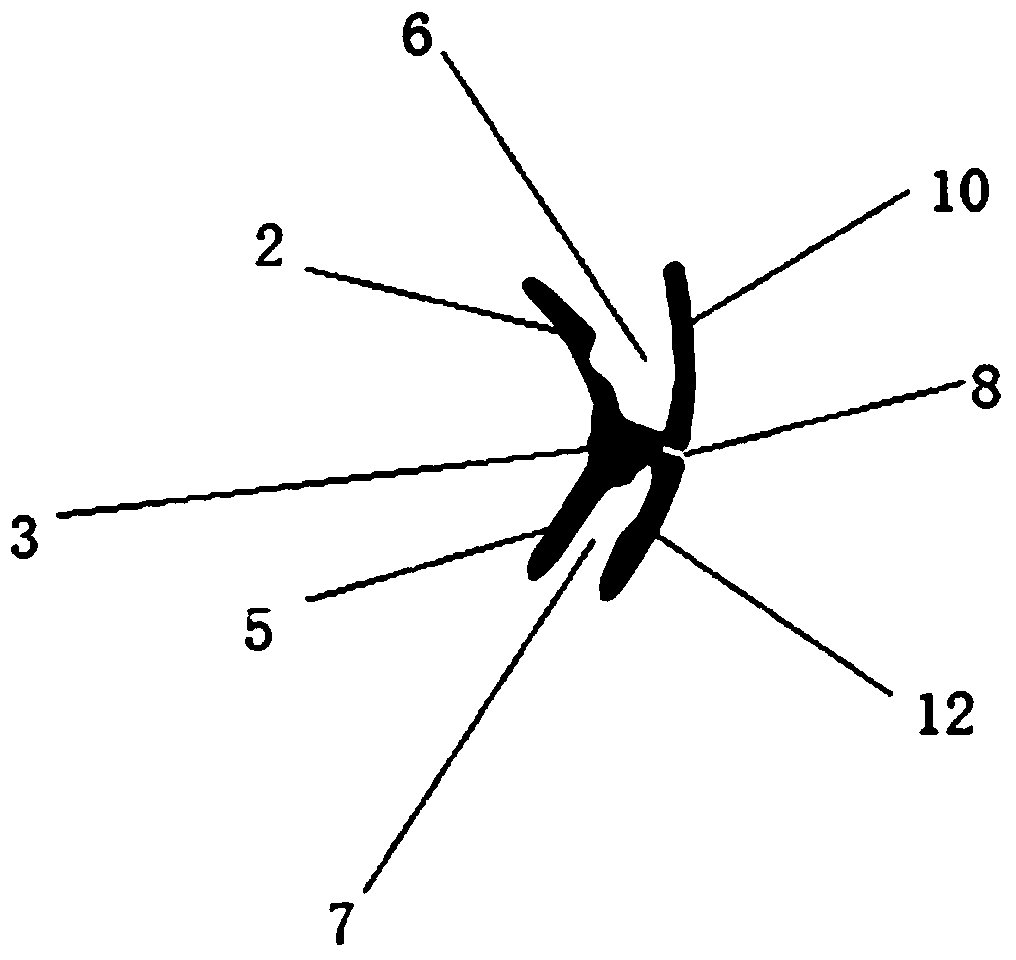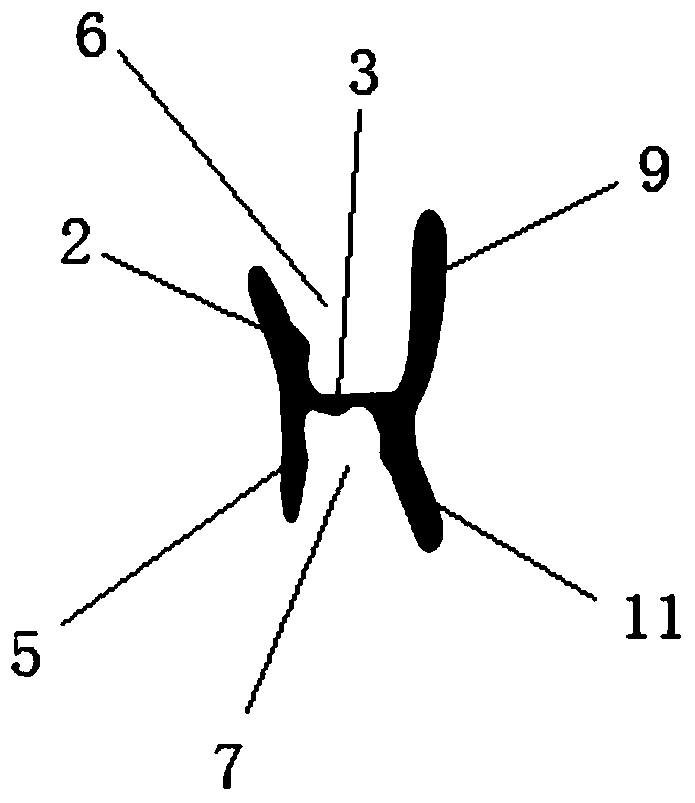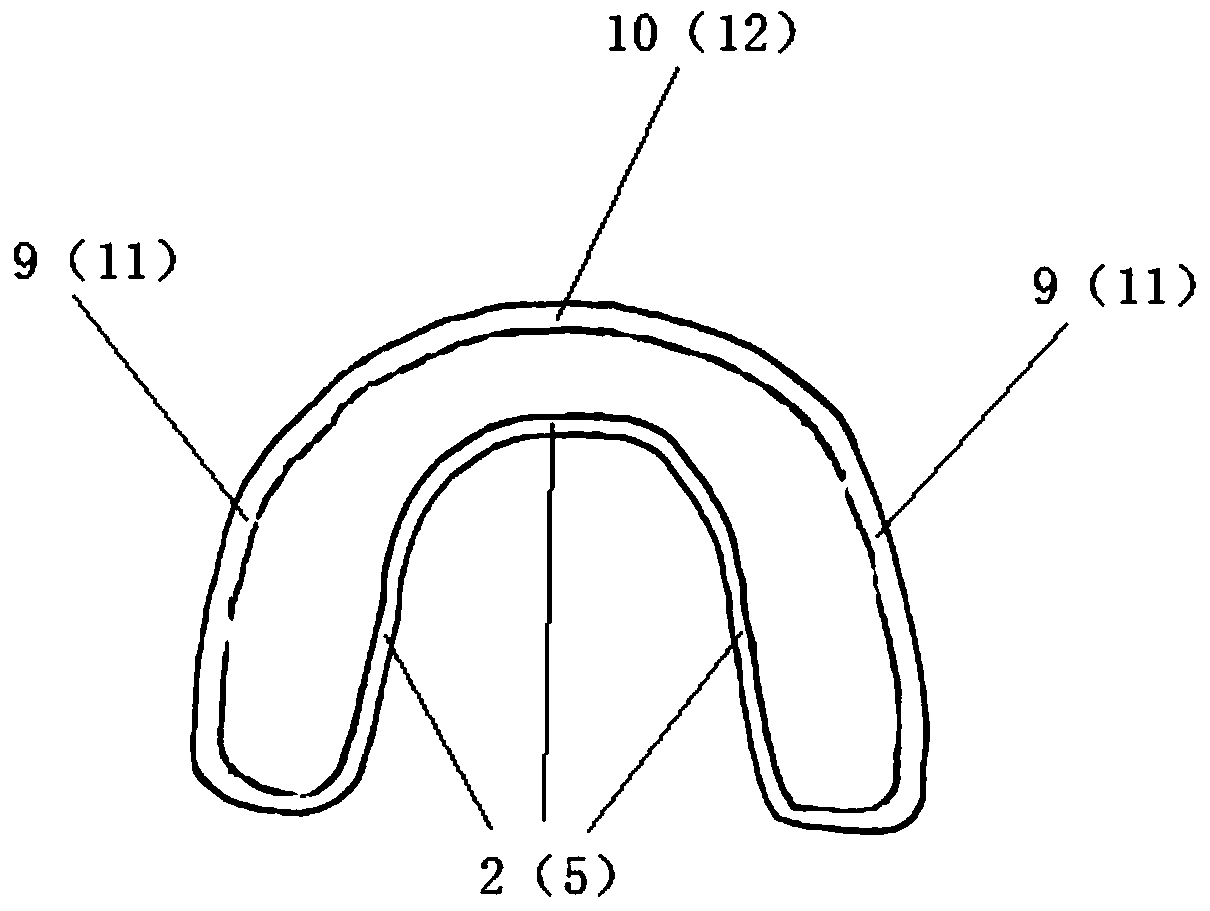A type III personalized functional appliance
An appliance and functional technology, applied in medical science, prosthodontics, orthodontics, etc., can solve the problem of poor functional or mild skeletal effect, no effect of promoting maxillary growth and mandibular growth, and poor comfort. and other problems, to achieve the effect of promoting the growth of the maxilla, inhibiting the growth of the mandible, and easy to use.
- Summary
- Abstract
- Description
- Claims
- Application Information
AI Technical Summary
Problems solved by technology
Method used
Image
Examples
Embodiment 1
[0047] Example 1 Type III Personalized Functional Appliance
[0048] 1. A type III personalized functional appliance, as attached Figure 1-9 As shown, it includes maxillary lateral base 1, maxillary lingual base 2, occlusal pad 3, mandibular lateral base 4, and mandibular lingual base 5; maxillary lateral base 1 and maxillary lingual base 2 pass through occlusal pad 3 The connection is integrated to form the upper alveolar 6 , and the mandibular lateral base 4 and the mandibular lingual base 5 are connected through the occlusal pad 3 to form the lower alveolar 7 .
[0049] The upper and lower jaw bases are connected as a whole through the occlusal pad 3, which can coordinate the development of the upper and lower jaws, that is, promote the development of the upper jaw and inhibit the growth of the mandible.
[0050] The maxillary lateral base (1) is 3-5 mm away from the gingival mucosa; and extends 3-5 mm to the bottom of the vestibular groove, stretches the periosteum of th...
Embodiment 2
[0056] Embodiment 2 Manufacturing method of type III personalized functional appliance
[0057] The manufacturing method of type III personalized functional appliance described in embodiment 1 comprises the following steps:
[0058] 1) An intraoral model containing the patient's oral data is prepared in the clinic, that is, a wax joint containing the positional relationship between the maxilla and the mandible;
[0059] 2) Convert the three-dimensional data of the patient's oral structure according to the intraoral model, and determine the relationship between the upper and lower jaws. If necessary, proper tooth arrangement can be performed to obtain the integration of the relative positional relationship between the upper and lower jaw dentition and the alveolar bone. digital model of
[0060] 3) Design the structure and shape of the functional appliance on the digital model;
[0061] 4) Use 3D printing technology to print out the shape of the appliance, that is, print out ...
PUM
 Login to View More
Login to View More Abstract
Description
Claims
Application Information
 Login to View More
Login to View More - R&D
- Intellectual Property
- Life Sciences
- Materials
- Tech Scout
- Unparalleled Data Quality
- Higher Quality Content
- 60% Fewer Hallucinations
Browse by: Latest US Patents, China's latest patents, Technical Efficacy Thesaurus, Application Domain, Technology Topic, Popular Technical Reports.
© 2025 PatSnap. All rights reserved.Legal|Privacy policy|Modern Slavery Act Transparency Statement|Sitemap|About US| Contact US: help@patsnap.com



